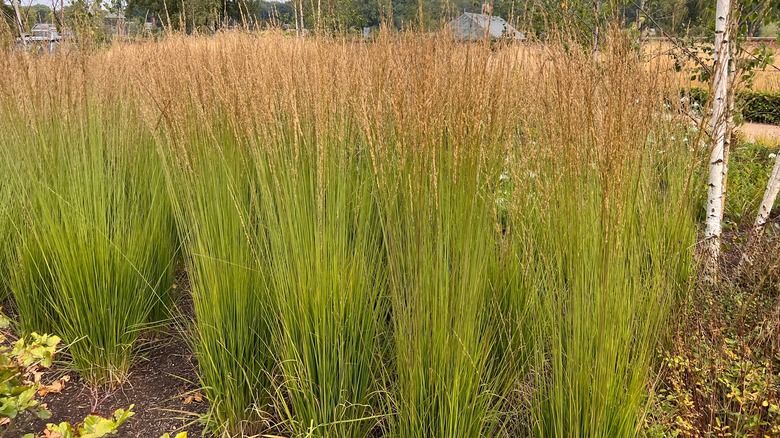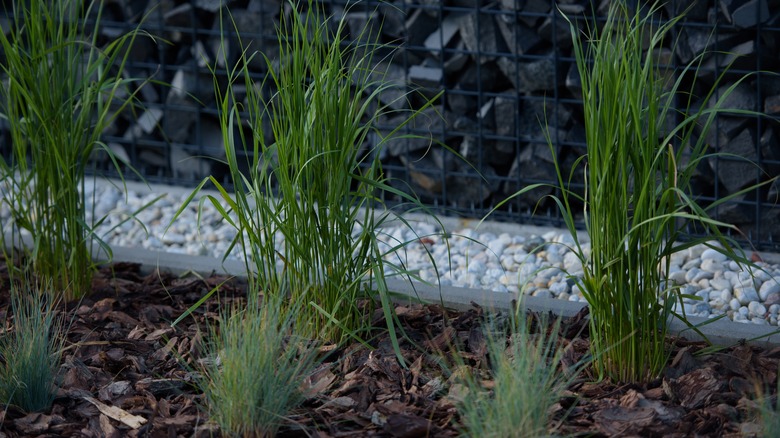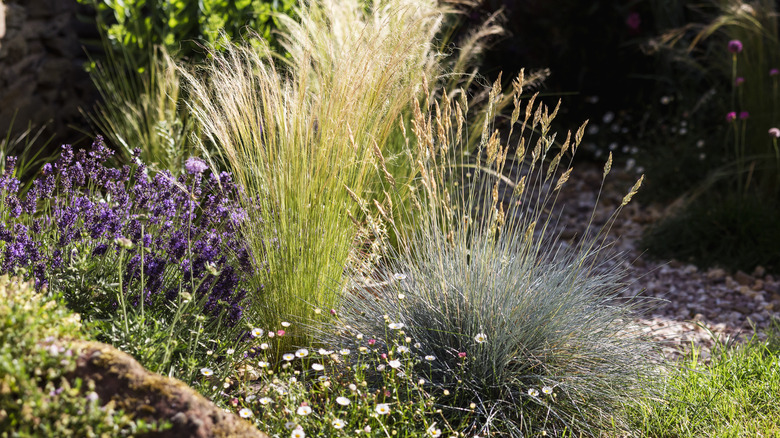Why You Should Be Dividing Your Feather Reed Grass
Ornamental grasses like feather reed grass add height, elegance, and movement to gardens. While feather reed grass is an extremely low maintenance plant (and, with little attention, can be a perfect ornamental grass for most yards), there are advantages to dividing it every few years. Not only does dividing your feather reed grass keep the plant healthy and vigorous, but it also gives you new clumps of grass, which can be used to decorate other areas of your garden or pass along to friends and family.
Feather reed grass (Calamagrostis x acutiflora) is an ideal ornamental grass in zones 3 through 9. Not only is it low maintenance and a great source of fall and winter interest, but it is also sterile, meaning it won't become invasive and take over your garden. While feather reed grass doesn't require division yearly, you should plan to divide it at least every three to four years. If the grass stops growing as well as it has in previous years, or you notice a dead spot in the middle of your grass clump, then that is a good sign that your feather reed grass is past ready to divide.
How to divide feather reed grass
Whether you're dividing your feather reed grass because it is becoming overcrowded or just because you want two feather reed grasses for the price of one, you have a fair amount of flexibility regarding what time of year to divide your grass. While fall is often considered the ideal time to divide cool season grasses, you can also divide them in early spring. In addition to gloves and a shovel, you should also have a saw or ax with you, as ornamental grasses have roots that are notoriously difficult to divide.
Before you begin dividing your grass, cut it back to around 6 inches. Then, dig up your clump of feather reed grass and rinse off the roots to remove most of the soil. Use either a garden saw or the shovel to divide the clump into smaller clumps that are at least 3 inches wide. Replant these new divisions to the same depth the grass was originally planted, with the crown just below the soil line. If you don't have a permanent location for your divisions, you can plant your grass in a container. Be sure to water the grass well and fertilize it if necessary.
What to do with feather reed grass divisions
Once you've divided your feather reed grass, you need to find somewhere in your garden to use it. Luckily, it is an extremely versatile plant, so there are plenty of options. Feather reed grass is quite drought tolerant, so it could be an ideal addition to a water wise garden of drought resistant plants. It's also surprisingly tolerant of wet soil, and can fit right into a rain garden. It is also a deer resistant grass, which means you don't need to put any effort into protecting it from hungry guests.
Wherever you decide to plant your feather reed grass, just remember to give it full sun to keep it growing tall and upright. Additionally, plant it towards the back of most gardens and borders, as it can reach heights of 5 feet and may overshadow shorter plants in the wrong location. If you really can't find a spot in your yard for your new feather reed grass divisions, then they also make great gifts or contributions to plant swaps.


